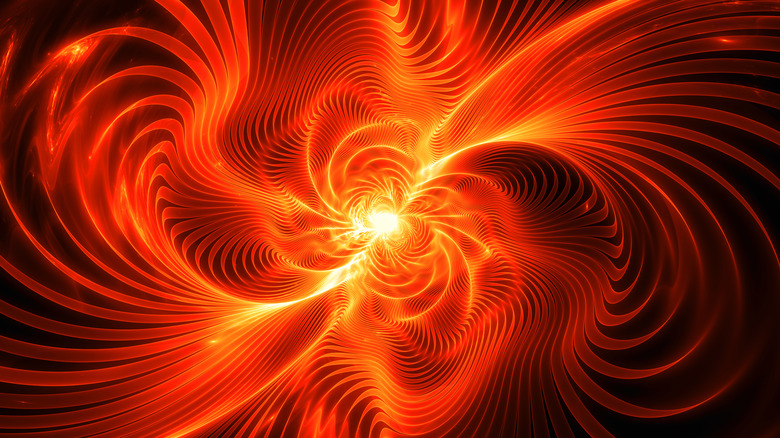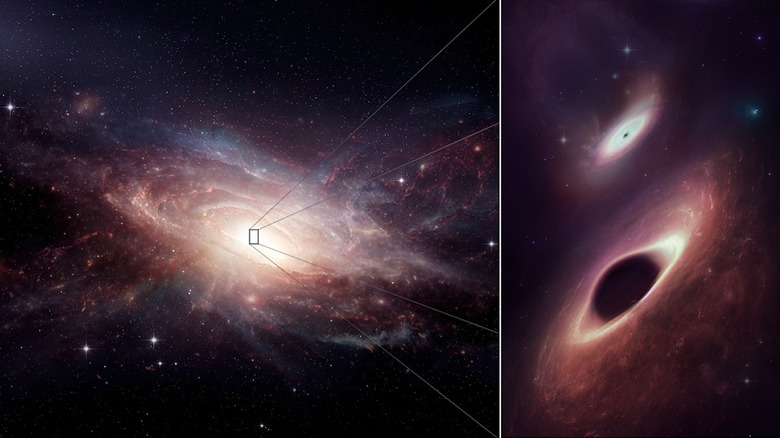Scientists Combined Seven Telescopes To Look For Colliding Black Holes. Here's What They Found
It's been said that two heads are better than one. As it turns out, seven telescopes are better than one, too. Sure, it doesn't flow off the tongue in quite the same way, but that didn't stop scientists from combining observations from telescopes both across the globe and above it for some truly astonishing results.
In a recently published paper, scientists detailed how they used multiple telescopes to look at the distant galaxy UGC 4211. The seven telescopes they used—including the Hubble Space Telescope — made observations of different parts of the electromagnetic spectrum, giving astronomers a more detailed picture than they could have achieved with any single instrument. The multiple observations also provided validity to their findings, ruling out potential errors that might otherwise be missed.
As reported by Space, UGC 4211 is about half a billion lightyears away in the direction of the constellation Cancer. The galaxy is of interest because it's the product of two separate galaxies merging together. Many galaxies are known to have a supermassive black hole at their center. Because UGC 4211 was made from two other galaxies, it contains not one but two supermassive black holes. Eventually, they too will merge, but for now, they're just beginning their extraordinary dance. At a current distance of 750 lightyears apart, these are officially the closest-to-colliding pair of supermassive black holes anyone has ever seen.
When worlds collide
It's hard to wrap your head around the size of any celestial object, let alone a supermassive black hole, but let's give it a shot. As a starting point, the sun is big enough to hold over a million Earths within its volume (via Business Insider). According to a press release from the Flatiron Institute — which participated in the research — one of the supermassive black holes they observed is 125 million times more massive than our sun. And that's the smaller one. The second is over 200 million times more massive.
The scientists suggested that these findings might mean there are many more of these pairings of collision-destined supermassive black holes throughout the universe than previously believed. Black holes were already known to collide and merge, and this was true for the supermassive variety too. When these collisions occur, they're violent enough to send shockwaves rippling through the fabric of spacetime itself in the form of gravitational waves, which scientists have only just begun to learn how to detect.
Learning more about what happens when supermassive black holes collide could provide insights not only into the history and evolution of the universe but also provide clues as to its future. After all, it'll only be a few billion years until our own Milky Way galaxy merges with Andromeda, and if humans are still around to watch those two supermassive black holes collide, it would be nice to know where the best seats will be.

